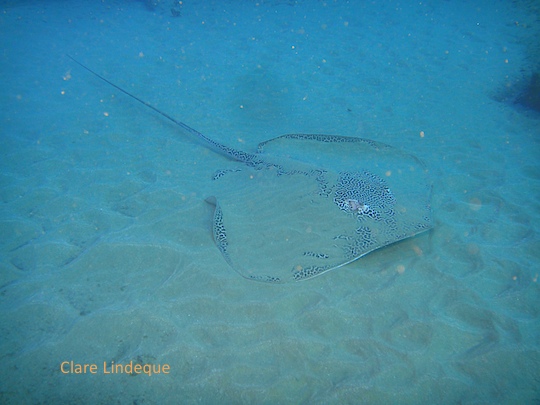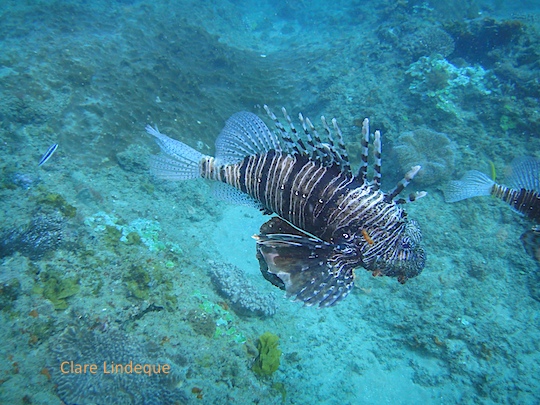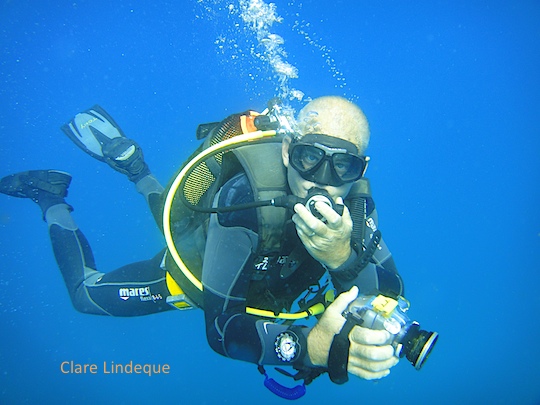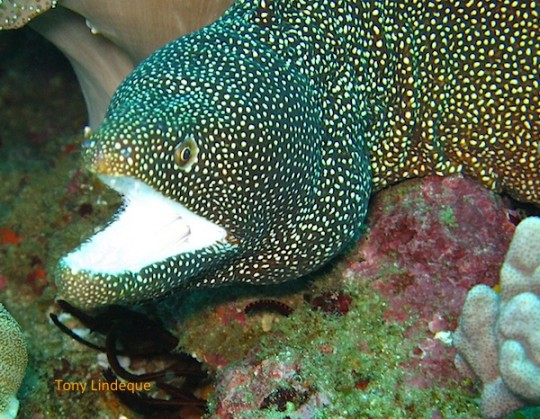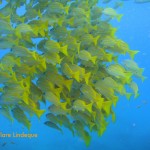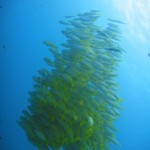
Unfortunately my dive on Bikini – the second one I did in Durban – was really horrible, as my mask kept flooding (I think I had hair caught under the skirt). After a while fighting off the feeling of imminent drowning became too exhausting, and I surfaced early. I didn’t take many photographs, but what I remember of the creatures on view is that they were many and varied – geometric moray eels, lionfish, scorpionfish, nudibranchs, a frogfish and the other usual suspects found on South Africa’s east coast. I took so few photos that I’ve borrowed a lovely one that Maurice took of said eel. Here it is:

The reef structure was much like we see at Sodwana, made of sandstone with potholes and little overhangs. I saw mostly soft corals – none of the big plate corals that are common in southern Mozambique and beyond. This reef is part of the Blood Reef system that stretches along parallel to the Bluff. The reef system got its name because the old whaling station used to pump out blood and offal from slaughtered whales into the ocean, causing the reef to thrive and supporting an impressive population of oceanic white tip sharks. We didn’t see any sharks – I’m sure they were all too busy being killed in the gill nets off the Durban beaches to come and visit divers.

Bikini Reef is small, and covers the good bits (this is allegedly the origin of its name). It’s a regular haunt of pineapplefish, but the current was going in the wrong direction for us to comfortably visit the overhang that many of these fish frequent. We had a pleasant drift dive (mask issues aside) and an easy introduction to the Blood Reef complex.
I should mention that my Durban photos are mostly questionably lit and poorly executed because I am using a new camera, and prior to the Durban trip had only done two dives with it! Hopefully matters will improve so I don’t have to revert back to my trusty Sony DSC-TX5. I’m still using the Ikelite AF-35 strobe, though (not that it’s much in evidence here).
Dive date: 19 June 2013
Air temperature: 23 degrees
Water temperature: 22 degrees
Maximum depth: 23.5 metres
Visibility: 20 metres
Dive duration: 28 minutes


































